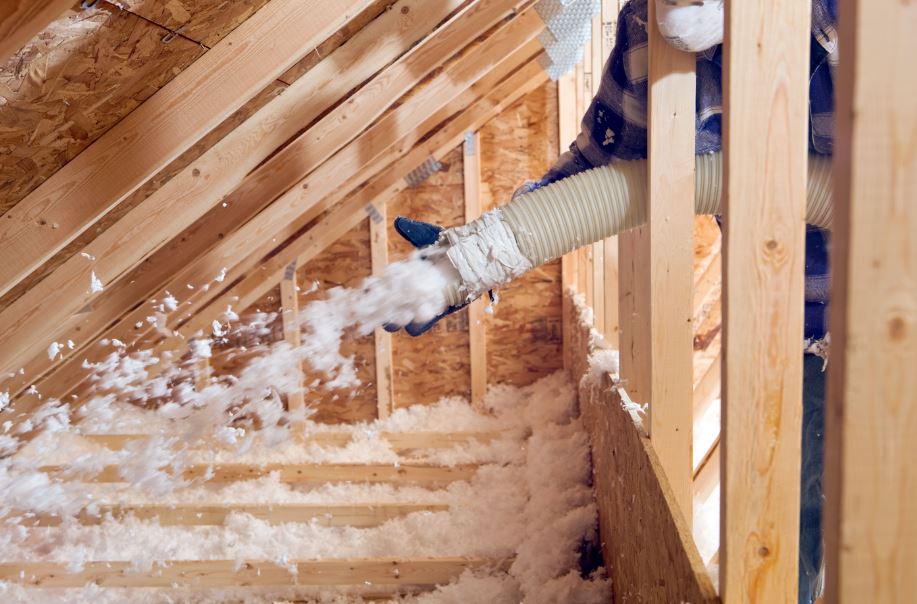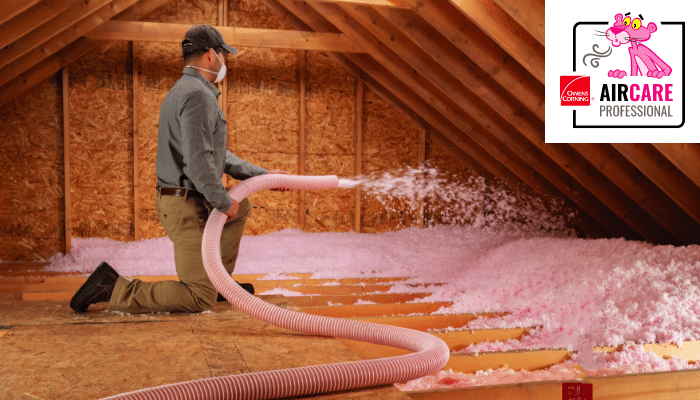Attic Insulation DFW: The Trick to Lower Energy Bills and Improved Home Comfort
Attic Insulation DFW: The Trick to Lower Energy Bills and Improved Home Comfort
Blog Article
Discover the Various Sorts Of Attic Insulation and Their Unique Advantages for Your Home's Energy Performance

Fiberglass Insulation
Fiberglass insulation is among one of the most generally used products for attic insulation as a result of its superb thermal performance and cost-effectiveness. Composed of tiny glass fibers, this material effectively traps air, developing a protecting obstacle that assists preserve regular indoor temperature levels. Its high R-value per inch makes it specifically efficient at withstanding warmth transfer, which is important for power conservation in homes.
Setup of fiberglass insulation is fairly uncomplicated, frequently offered in batts or loose-fill kinds, accommodating different attic room arrangements. Additionally, it is non-combustible and resistant to dampness, decreasing the danger of mold and mildew advancement. This toughness adds to its durability, making fiberglass a feasible long-lasting financial investment for house owners.
Additionally, fiberglass insulation is commonly manufactured from recycled materials, which boosts its eco-friendliness. The material can additionally add to soundproofing, lessening noise transfer between spaces. While it is important to put on safety gear throughout installment to avoid irritation from the fibers, the overall benefits of fiberglass insulation, including power financial savings and ecological factors to consider, make it a prominent selection for enhancing attic performance and promoting a comfy living atmosphere.
Spray Foam Insulation
Spray foam insulation is a highly efficient option for attic insulation, known for its premium air sealing and thermal performance. This cutting-edge insulation material is composed of a combination of isocyanate and polyol material, which, when combined, increases rapidly to fill voids and dental caries in the attic room. Its ability to follow various surfaces ensures a constant barrier versus air leaks, dramatically reducing heat loss throughout chillier months and warmth gain during warmer seasons.
One of the key advantages of spray foam insulation is its high R-value per inch, which means it offers excellent thermal resistance in a relatively slim application. This is specifically advantageous in attics where space is commonly limited. In addition, spray foam can help minimize moisture build-up, reducing the danger of mold and mildew growth, which can be detrimental to both the structure and indoor air high quality.
While the preliminary price of spray foam insulation might be more than traditional alternatives, its lasting energy cost savings, paired with boosted comfort and enhanced home worth, make it a worthwhile investment for house owners seeking enhanced power performance. Attic Insulation DFW. In general, spray foam insulation stands apart as an effective solution for optimizing attic room insulation
Cellulose Insulation

Cellulose insulation is a popular selection for attic insulation, primarily made up of recycled paper products treated with fire resistants. This environmentally pleasant alternative is known for its outstanding thermal efficiency, successfully lowering warm transfer in both summer and winter months. The dense composition of cellulose enables it to fill up gaps and spaces in attic room areas, giving a smooth obstacle versus air leaks.
One of the significant benefits of cellulose insulation is its capacity to resist mold and mildew and parasites, owing to the fire resistant therapies used during production. Additionally, it boasts a high R-value per inch, which equates right original site into exceptional power effectiveness. Property owners can expect lower heating and cooling expenses as an outcome of boosted insulation.
Installation is generally achieved with blowing loose cellulose into the wanted area, allowing for a reliable and quick procedure. This method additionally minimizes disturbance to the existing framework. Cellulose insulation has a reasonably low environmental effect, as its production process uses recycled products, adding to lasting structure methods.
Rock Woollen Insulation
Amongst the numerous options for attic insulation, rock woollen, also understood as mineral wool, attracts attention due to its outstanding thermal and acoustic performance. Made from recycled or natural materials, rock woollen is created by thawing rock and spinning it into fibers, resulting in a product that supplies superb insulation buildings.
Among the considerable benefits of rock woollen insulation is its high R-value, which shows its efficiency in resisting warmth flow. This characteristic not only enhances energy effectiveness yet also adds to keeping a comfy interior temperature year-round. Furthermore, rock woollen is inherently fire-resistant, making it a more secure option for homes as it can hold up against high temperatures without melting or launching hazardous fumes.
In addition, rock wool insulation stands out in soundproofing capacities, effectively lowering sound transmission in between rooms and from outside resources. In general, rock woollen insulation supplies a comprehensive option for improving power effectiveness, safety and security, and convenience in domestic setups.
Glowing Barrier Insulation
Radiant barrier insulation functions as an efficient solution for lessening warm transfer in attics, particularly in warmer climates. This kind of insulation works by reflecting glowing warm far from living areas, thereby lowering the quantity of heat that goes into a home during heat - Attic Insulation DFW. Normally composed of a highly reflective product, such as aluminum foil, glowing barriers are installed in attics, dealing with the roof covering, where they can intercept have a peek here incoming heat from the sunlight
The main benefit of radiant barrier insulation is its capacity to reduced air conditioning prices. By showing warm instead of absorbing it, glowing obstacles can assist keep a much more stable interior temperature, lowering the workload on cooling systems. This efficiency equates into reduced power bills and enhanced comfort for property owners.
Along with power cost savings, radiant obstacles can also add to enhanced indoor air top quality. By minimizing warm accumulation, they assist lessen moisture levels, which can stop mold and mildew growth and boost general air circulation. When mounted correctly, radiant barrier insulation can be a vital addition to any type of energy-efficient home, making it a worthy factor to consider for homeowners aiming to boost their attic insulation strategy.
Verdict
In conclusion, recognizing the numerous kinds of attic insulation-- fiberglass, spray foam, cellulose, rock woollen, and glowing barriers-- enables homeowners to make educated choices pertaining to energy effectiveness. By picking the suitable insulation product, significant reductions in energy prices can be accomplished, along with enhancements in indoor comfort.

In conclusion, understanding the numerous types of attic room insulation-- fiberglass, spray foam, cellulose, rock wool, and radiant obstacles-- makes it possible for property owners to make informed decisions concerning energy efficiency.
Report this page